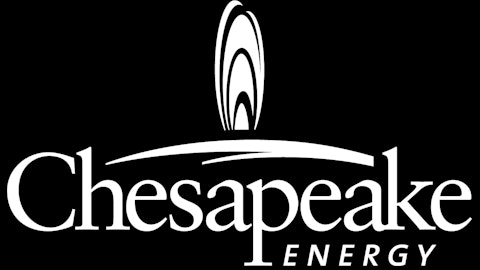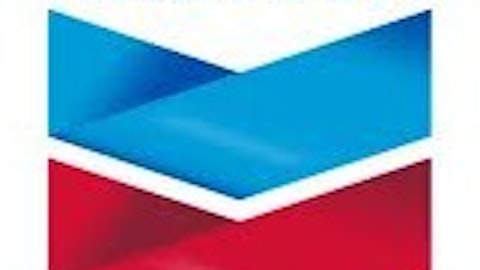Kodiak Oil & Gas Corp (NYSE:KOG) recently provided an interim update on completion and drilling activities. Below, I will examine Kodiak’s growth potential by looking at the specific growth drivers in this update.
Highlights

Drilling operations are in progress with seven operated rigs, of which three drilling rigs are operating in the Polar project area in southern Williams County. There is one rig in each of the Smokey, Koala, and Grizzly project areas in McKenzie County, and one rig operating in Dunn County. Kodiak plans to release one of the drilling rigs during the first quarter of 2013 and continue to operate six rigs throughout the rest of 2013.
Kodiak’s program to test 12 wells within a drilling spacing unit (DSU) in the company’s Polar and Smokey operating areas continues on schedule. The Polar pilot project wells will be drilled from three four-well pads, with six wells targeting the Middle Bakken and six wells targeting the two upper intervals of the Three Forks formations. Drilling from the first four-well pad has commenced. Kodiak expects to mobilize two additional rigs onto the remaining pads later in the first quarter 2013. In Smokey block, two wells within the test DSU are now producing and a rig is presently drilling the second of three additional well bores into the same DSU. The company intends to drill the remaining seven wells following drilling of the Polar pilot program.
Since Kodiak’s last operations update in early December 2012, the company has finished completion operations on 11 gross (8.6 net) wells that are currently in flow-back operations. In December 2012, several producing wells were shut-in for reservoir pressure maintenance during the completion operations of the offsetting wells. Kodiak expects fourth quarter 2012 average daily oil and gas sales volumes of approximately 19,000 barrels of oil equivalent per day (BOE/d). In December, the peak daily oil and gas sales rate was around 26,000 BOE/d, and the peak production rate was roughly 29,000 BOE/d.
2013 Capital Expenditure Budget
Kodiak announced a $775 million 2013 capital expenditure budget allocated to the Williston Basin oil and gas assets. This compares to Kodiak’s final 2012 budget of $750 million and, of the 2013 budget, $600 million has been allocated to the drilling and completion of 75 gross (61 net) operated wells, $140 million to non-operated drilling and completion activities for 14 net wells, and $35 million for other expenditure. This is expected to be funded from existing working capital, cash flow generated from operations, and the commitment for its revolving credit facility of $450 million.
As a result of this expenditure, sales for 2013 are expected to average to average 29,000 to 31,000 BOE/d in volume, which would be a growth of more than 80% year-over-year. The projected exit rate for 2013 sales volumes is expected to range from 38,000 to 40,000 BOE/d. The budget reflects its continued commitment to the development of the Williston Basin leasehold acreage.
Kodiak has seen a significant reduction in its well costs over the past year and, though the budget is based on around $10 million per-well for drilling and completions costs, lower costs are expected to be achieved throughout 2013 and this is supported by the trend in the second half of 2012 The majority of acreage is held by production, allowing the company to focus on efficient and less expensive drilling. Adding to the cost benefit is the infrastructure already in place.
Peers Operating In The Bakken
Some of the other energy players in the Bakken include Phillips 66 (NYSE:PSX) and EOG Resources, Inc. (NYSE:EOG) .
Phillips 66 recently made a five-year commitment to ship North Dakotan crude oil by rail to its New Jersey refinery thus betting in the region of $1 billion that North American crude will continue to remain cheap. The company has been looking at ways to increase profitability and reduce costs. Analysts have been wondering whether the company would try to sell its two California refineries and exit the state because of higher operating costs.
CEO Garland said the company is focused on improving profitability by tapping into cheaper crudes already run by refineries elsewhere in the country and reducing costs. According to Garland, the company is looking at “any and all options” for its California refineries. The company has faced many challenges in the state, namely regulatory requirements and high costs.
Meanwhile, EOG averaged 13 days per well in the third quarter of 2012 but investors should keep in mind that the Bakken Shale play is only one part of the acreage held by EOG. EOG is one of the top producers in the Bakken. EOG has an oil-rich portfolio; therefore it has been able to grow oil production faster than most of its peers. EOG saw amazing production gains from its Eagle Ford and Bakken acreage over the past five years. Oil brought in nearly 90% of EOG’s 2012 revenue.
Continental Resources, Inc. (CLR) is already averaging costs of $9.2 million per well, while, at the higher end, QEP Resources Inc (QEP) is grappling with costs in the region of $11 million per well. All of these companies are constantly using different methods to contain costs. Some of the more commonly used methods include alternating between long and short laterals, changing the number of fracturing stages and using “down-spacing,” which reduces the spacing between the wells.
Conclusion
Kodiak experienced revenue growth of 287% in 2012, but earnings growth was nowhere near this figure. Kodiak’s management team pointed out there were significant expenses that had a negative impact on earnings. The Williston Basin is an expensive place to drill for oil, and unrealized losses due to hedges marked to market also played a role.
Kodiak is among the smaller players here, but could be an interesting investment prospect if it achieves its projected 2013 growth and sales. At current oil prices, Kodiak’s Williston basin acreage is profitable, and an important positive to factor in is that Kodiak has no natural gas exposure. Based on the increased production forecast, and consequently, better earnings figures, I recommend buying Kodiak.
The article A Stellar Energy Pick For 2013 originally appeared on Fool.com and is written by Jordo Bivona.
Copyright © 1995 – 2013 The Motley Fool, LLC. All rights reserved. The Motley Fool has a disclosure policy.



